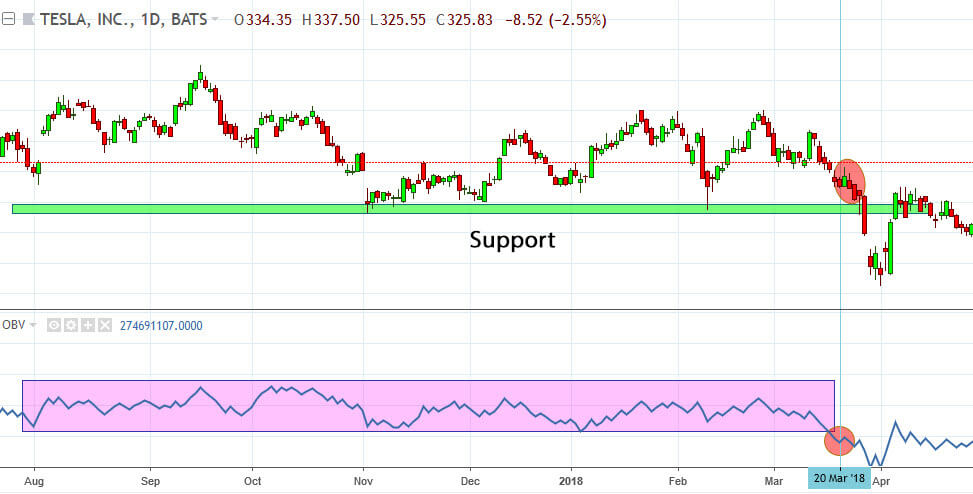Contents:


revaluation reserve meaning reserve is an accounting term used when a company creates a line item on its balance sheet for the purpose of maintaining a reserve account tied to certain assets. This line item can be used when a revaluation assessment finds that the carrying value of the asset has changed. It can be used in writing off the capital losses from sale of fixed assets, shares & debentures and issue of fully paid up bonus shares to existing shareholders. Capital Reserve is not available for distribution to shareholders. Different bases of valuation are sometimes used in the same financial statements to determine the book value of the separate items within each of the categories of fixed assets or for the different categories of fixed assets. In such cases, it is necessary to disclose the gross book value included on each basis.
This is a non-cash reserve as it has a mere book entry effect on the assets of the organization. The revaluation reserve is also held in the balance sheet of the organization on the asset side of the liability side of the company depending on the positive or negative reserve. Since the revaluation reserve is a non-cash reserve, the company cannot charge any cash expenses or losses as it would amount to setting off actual losses against unrealized gains. Revaluation fund is the accounting term utilised when a business establishes a line item on the balance sheet for the purpose of maintaining a contingency account connected to other assets. The business can make line items to represent assets in the balance sheet if they believe it’s essential for proper accounting to be reported. However, they are helpful when a company assumes that its assets will change after a specific time.
Under the IFRS framework, revaluation is permitted; however, it is not allowed under US GAAP. Afterwards, businesses may choose between the Cost Model and the Revaluation Model. Inside the cost model, assets are depreciated during their useful lives without adjustments to the carrying value. A Revaluation reserve is money set aside by an insurance company to hedge against a decrease in the value of its assets.
Because policies such as life insurance, health insurance, and various annuities may be in effect for extended periods of time, valuation reserves protect the insurance company from losses from investments that may not perform as expected. This helps ensure that the policyholders are paid for claims and that annuity holders receive income even if an insurance company’s assets lose value. The assets are generally recorded in the books of accounts of insurance company on Historical Cost less impairment loss.
Share the article
There are two methods to create a revaluation reserve, namely, the indexation method and the current market price method. In case the value of the revalued asset is higher than the original book value, the difference will be credited to the revaluation reserve account. In case the value of the revalued asset is lower than the original book value, the difference will be debited to the revaluation reserve account. The revalued asset is both the cases will be reflected at the revised revalued value in the books of account.

Revaluation reserves on the other hand are not frequent and do not arise due to the operations of the business. There is no actual profit or loss and cash flow that happens when an revaluation exercise is carried out by the company. Hence if there is a boost in shareholders funds due to revaluation exercise, it is not sustainable and does not represent the quality of earnings of the company. Revaluation reserves arise from revaluation of assets that are undervalued in the bank’s books. These assets which can be revalued are bank premises and marketable securities. Such revalued reserves often serve as a cushion against unexpected losses, but they may be temporary in nature and cannot be considered as ‘Core Capital’ of a bank.
How to become a Registered Valuer under Companies Act? ALL YOU NEED TO KNOW -An Overview
You must immediately take up the matter with Stock Broker/Exchange if you are not receiving the messages from Exchange/Depositories regularly. Update your e-mail and phone number with your stock broker/depository participant and receive OTP directly from depository on your e-mail and/or mobile number to create pledge. Stock brokers can accept securities as margins from clients only by way of pledge in the depository system w. The period or frequency of revelation is not standard and may differ based on the nature of the asset and the industry to which the business belongs.
Liquidity conditions and monetary policy operations from 2 … – European Central Bank
Liquidity conditions and monetary policy operations from 2 ….
Posted: Thu, 30 Mar 2023 08:02:00 GMT [source]
This guide will give you the knowledge you need to maximize your finances, make more educated investment decisions, or just develop a deeper grasp of this difficult accounting practice. The word « Revaluation Reserve » often perplexes corporate owners and investors equally. As can be observed from the above, there are different heads of reserves for both the companies.
A negative revaluation reserve is therefore created with a charge to the value of the asset. Was credited or debited as appropriate, depending on the direction of the change in asset value. The physical and intangible assets are reassessed in light of current market conditions. From the above, we conclude that the Revaluation Reserves is treated differently in insurance company and other companies.
India has also integrated and adopted the IFRS as the businesses are going global. Efiling Income Tax Returns is made easy with ClearTax platform. Just upload your form 16, claim your deductions and get your acknowledgment number online. You can efile income tax return on your income from salary, house property, capital gains, business & profession and income from other sources. Further you can also file TDS returns, generate Form-16, use our Tax Calculator software, claim HRA, check refund status and generate rent receipts for Income Tax Filing.
Revaluation Reserve: A Comprehensive Guide For Indian Businesses And Investors
This guide seeks to provide Indian company owners and investors with the knowledge and resources they need to utilize the Revaluation Reserve properly. This is a one time exercise to tide over the crisis and with real estate prices not really in the grip of a bull run, another round of revaluation is unlikely to happen in the near future. Let’s say a company bought a piece of land for Rs. 100,000. Now, after many years, it’s worth Rs. 2 crores (Rs. 2,00,00,000) – or 200 times it was worth earlier. Below is the sample reserve and surplus section of two companies APL Apollo and Balkrishna Industries for FY17. General reserve and Retained Earnings – Think of this as the retained profits.
Tangible Net Worth: Definition, Meaning, Formula & Calculation – Investopedia
Tangible Net Worth: Definition, Meaning, Formula & Calculation.
Posted: Sat, 25 Mar 2017 21:09:51 GMT [source]
The difference between the depreciation calculated using the asset’s original cost and the depreciation figured using the asset’s revalued carrying amount is the amount of surplus that is transferred to retained earnings. In contrast to depreciation, this initial gain is not recognized in the income statement. This is reported to be the final review of capital based on other gross revenue.
More Under Company Law
It cannot be utilised for the purpose of issue of fully paid up bonus shares or write off of capital losses, unless the revalued fixed assets have been disposed off. Any loss from the sale of such asset is first adjusted against the revaluation reserve earlier created. After such charge, if there is any surplus left in the revaluation reserve account is to be transferred to the General Reserve account. This amount is then available for distribution to the owners. Also, as per the provisions of AS 10 and guidelines of IFRS in this regard, any accumulated losses or depreciation can also not be set off against the revaluation reserve. However, any additional depreciation on account of upward revaluation of the assets has to be adjusted against this reserve to utilize it.
Trading in “Options” based on recommendations from unauthorised / unregistered investmentadvisors and influencers.
- In addition, we’ll look at the legal and regulatory framework that governs the Revaluation Reserve in India and some real-world examples of Indian firms that have successfully used this accounting practice.
- CAs, experts and businesses can get GST ready with ClearTax GST software & certification course.
- As you know, the review area is a non-monetary reserve created by the company to operate when the market value of other assets occurs above or below the value of the book or book value.
- When entering a savings account, an offsetting contribution must be made to the expense account that will appear on the income statement.
- To remove the need to do this regularly, we have a revaluation reserve.
« 6.1 Fixed asset is an asset held with the intention of being used for the purpose of producing or providing goods or services and is not held for sale in the normal course of business ». The Board presumes that the items given under this issue are of the nature of ‘assets’ and the issue relates only to the classification thereof. Reserves are primarily created to protect the company’s financial position by providing funds for anticipated, planned, or unknown future costs. While surplus helps a business avoid unforeseen costs, it can also be misused if the funds are not allocated to a specific purpose.
However, incase an asset which was orginally classified as a fixed asset and is now classified as current asset, the excess can be transferred to a capital reserve instead of revaluation reserve. Whether or not to revalue the company’s fixed assets is a vital accounting decision because it can significantly impact a number of the company’s financial statements. Whether or not to revalue the company’s fixed assets is a choice that must be made. Companies that use IFRS are required, as a result of this fact, to carry out the revaluation thoroughly and carefully, even though U.S.
The revised earnings balance exceeds the income statement and is included in the dividend revenue sharing. In this process, a technical appraiser scans an asset to determine its market value. Full balance is required when the AG takes out immovable asset insurance.
Meaning of Revaluation Reserve in Insurance Company
A reserve is a portion of the amount of money that has been allocated to serve a particular goal. In accounting, the term reserve is the term used to describe the amount set aside for future tasks such as paying bonuses, buying assets and paying legal fees. Revaluation reserves are assets that insurance companies set aside per state law to mitigate the risk of declines in the value of investments they hold. They function as a hedge to an investment portfolio and ensure that an insurance company remains solvent. An impairment loss shall be recognised as an expense in the Revenue/Profit and Loss Account immediately, unless the asset is carried at revalued amount.
NMBZ : 2023 FY Financials & Audit Report – Marketscreener.com
NMBZ : 2023 FY Financials & Audit Report.
Posted: Fri, 31 Mar 2023 07:00:00 GMT [source]
You can use them to fund various special purposes of your company. The extra amount is charged over an amount equal to every value’s share when shares are exchanged, given or taken away. In general, a surplus can cause an imbalance in the demand and supply of the product, and this can cause the product to move through the market inefficiently. Any gain in revaluation of Capital Investments n real estate will be recited in Revaluation Reserve.
They may also advise corporations on how to best use the Revaluation Reserve for investments and acquisitions and assist them in managing their debt loads. Investors should also analyze India’s regulatory and legal environment for Revaluation Reserve and verify that the firm complies with applicable rules and regulations. As a result, investors may find the firm to be an appealing investment opportunity. On the one hand, a high amount of Revaluation Reserve may suggest that a company’s assets are undervalued, contributing to future earnings and growth chances. Investing in firms with a Revaluation Reserve can give investors both benefits and concerns.
To make sure that an insurance company remains solvent so that it can pay insurance claims and annuities, it must maintain a certain amount of valuation reserves. When accumulated losses and depreciation are adjusted against Revaluation Reserve, it will amount to setting off actual losses against unrealised gains. The difference between the market value and the book value does not represent realised gain and cannot be treated as such in the books of account. Section 205 of the Companies Act, 1956 provides that a company can declare or pay dividend only out of its profits. The profits for this purpose are to be arrived at after providing for depreciation.
Revaluation reserves are mandatory under state law to protect against the natural fluctuations in the value of investments. Revaluation reserves have an offsetting expense that is debited or credited depending on the change from revaluation. Revaluation reserves are most often used when an asset’s market value greatly fluctuates or is volatile due to currency relationships. It is not appropriate for the revaluation of a class of assets to result in the net book value of that class being greater than the recoverable amount of the assets of that class. This ratio determines how well a corporation uses its assets to create income. It is a component of the company’s general reserve and is accessible for the benefit of shareholders under Indian Generally Accepted Accounting Standards .
A revaluation fund is the accounting term used when a company creates a line item on its balance sheet to keep a contingency account linked to other assets. When a re-evaluation appraisal reveals that the carrying value of an asset has changed, a line item is created. If the asset’s value declines, the revaluation money is credited to the balance sheet, lowering the asset’s carrying value, and the cost is deducted to minimise the overall revaluation cost. If the asset’s value rises, the offsetting reserve expenditure is lowered by credit, but the balance-sheet revaluation reserve is increased by debit. On disposal of a previously revalued item of fixed asset, the difference between net disposal proceeds and the net book value is normally charged or credited to the profit and loss statement.
This website is intended to provide a general guide to the News paper and the services it provides. The material on our site is given for general information only and does not constitute professional advice. Where appropriate, users should seek their own legal or other professional advice. The News paper accepts no responsibility for loss occasioned to any person acting or refraining from acting as a result of material contained in this website. The News paper accepts no liability in respect of material contained on other sites which may be linked to this site from time to time.
This approach aims to prevent fixed assets from becoming less expensive / less valuable here are a few things to consider when determining the fair value of an asset. As you know, the review area is a non-monetary reserve created by the company to operate when the market value of other assets occurs above or below the value of the book or book value. Analysis is usually used to show the effect of the difference between the market value of an asset and the volume of an asset book at a particular point in time.